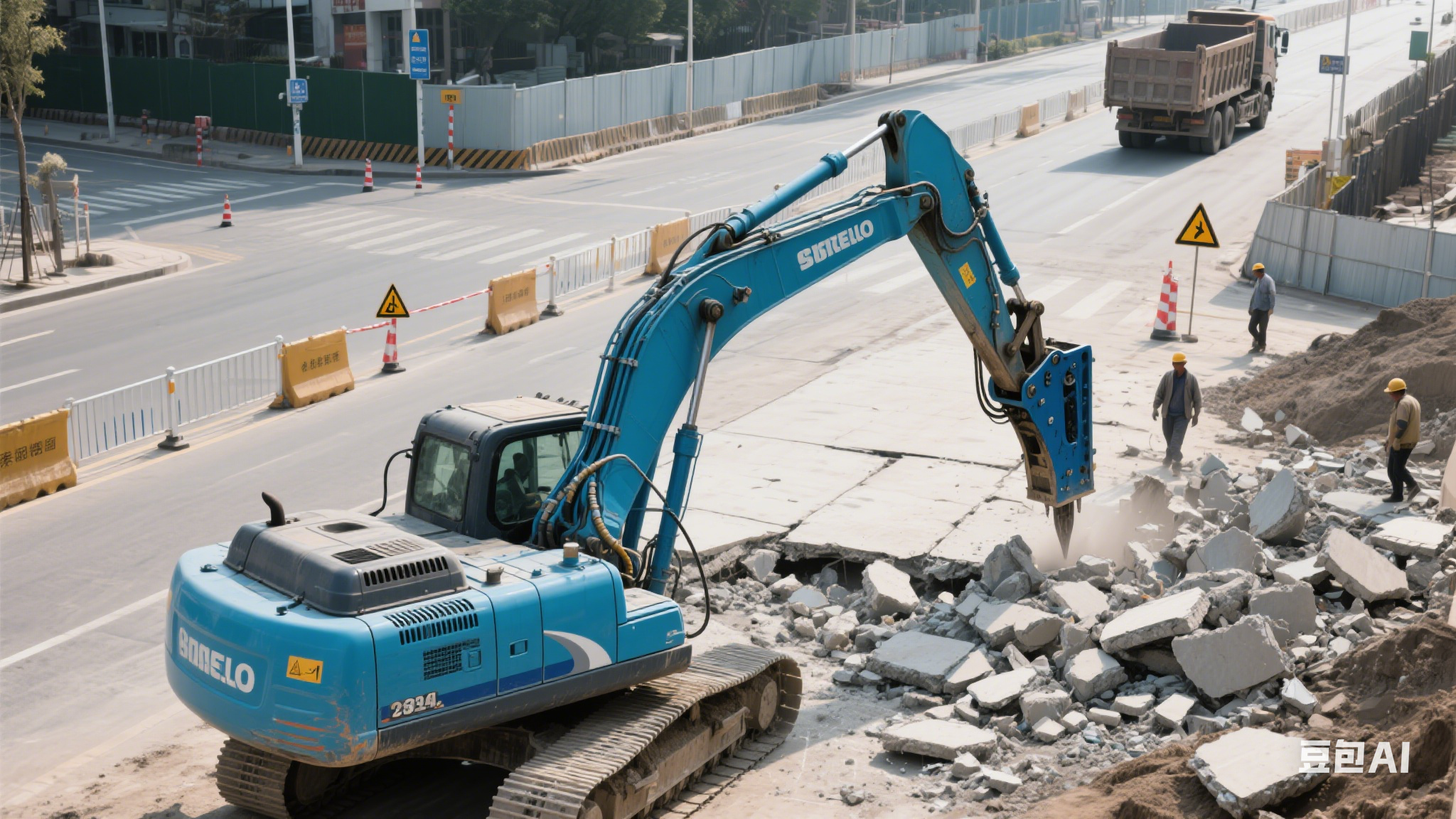
Hydraulic breakers are indispensable workhorses in construction, mining, and demolition, capable of tackling tough materials like concrete, rock, and reinforced structures. However, their immense power demands strict adherence to best practices to avoid equipment damage, safety hazards, and costly downtime. Below, we outline critical do’s and don’ts for operating hydraulic breakers, designed to enhance safety, prolong equipment lifespan, and optimize performance—backed by industry insights for SEO-friendly clarity.
Understanding Hydraulic Breakers: A Quick Overview
Hydraulic breakers, often called hydraulic hammers, are attachments for excavators, skid steers, or loaders. They use hydraulic pressure to drive a piston, delivering high-impact blows to break up rigid materials. Unlike blasting, they offer precision, control, and reduced vibration, making them ideal for tight spaces. However, improper use can lead to premature wear, hydraulic system damage, or operator injury.
The Do’s of Hydraulic Breaker Operation
1. Match Hydraulic Flow and Pressure
Ensure the breaker’s hydraulic flow matches the carrier machine’s specifications. Mismatched flow or pressure can cause overheating, reduced efficiency, or mechanical failure. Always consult the OEM manual for compatibility data.
2. Reposition and Apply Steady Pressure
During operation, reposition the breaker every 15–30 seconds while maintaining downward pressure on the material. This prevents overheating and ensures even wear, facilitating faster breakdown of the target.
3. Operate from the Operator’s Seat
Never operate the breaker remotely or from outside the cab. The operator’s seat provides full control and visibility, minimizing risks from sudden movements or debris.
4. Ensure Free Movement of the Head
Check that the breaker’s head moves freely before starting. Restricted movement can cause excessive stress on internal components, leading to costly repairs.
5. Conduct Pre-Operation Flow Tests
Test the carrier machine’s hydraulic flow (e.g., excavator, skid steer) to validate performance. This proactive step ensures optimal functionality and extends equipment lifespan.
6. Prioritize Regular Lubrication
Lubricate the breaker’s tool bushings and shank daily or as recommended by the manufacturer. Proper lubrication reduces friction, prevents galling (metal-to-metal wear), and maintains smooth operation.
7. Weekly Inspections for Wear and Tear
Remove the breaker bit weekly to inspect the tool shank for signs of wear, corrosion, or galling. Address issues promptly to avoid catastrophic failures during operation.
8. Daily Visual Checks
Perform daily visual inspections of hydraulic hoses, connections, and components. Look for leaks, cracks, or loose parts—common issues exacerbated by vibration.
9. Train Operators Thoroughly
Ensure all operators understand the breaker’s mechanics, safety protocols, and how to identify early warning signs (e.g., unusual noises, reduced performance).
The Don’ts of Hydraulic Breaker Operation
1. Never Blank Fire the Breaker
Avoid operating the breaker while it’s suspended in the air (blank firing). Without material to absorb the impact, energy rebounds into the tool, causing internal stress, fractures, and premature wear. Always keep the bit firmly engaged with the target.
2. Don’t Stay in One Spot Too Long
Prolonged firing in the same area generates excessive heat, which can warp components or break the tool. Reposition every 15–30 seconds to distribute impact and maintain cooler operating temperatures.
3. Avoid Underwater Use Without Proper Kits
Never submerge the breaker underwater unless equipped with a manufacturer-approved air compressor kit. Water intrusion can contaminate hydraulic fluid, leading to system failure.
4. Steer Clear of Trench Walls
When working in trenches, ensure the breaker does not strike the walls. Impacting unstable walls can cause collapses, endangering operators and nearby workers.
5. Don’t Start Breaking from the Center
For large objects, avoid targeting the center first. Starting at the edges reduces breakout force and stress on the breaker. Work gradually inward to minimize strain and overheating.
6. Never Use for Unintended Tasks
Hydraulic breakers are not designed for lifting, prying, or moving objects. Using them for such tasks risks damaging the attachment and destabilizing the carrier machine.
7. Report Wear and Damage Immediately
Ignoring signs of wear (e.g., leaking oil, unusual vibrations) can lead to catastrophic failures. Establish a protocol for reporting issues promptly to facilitate timely repairs.
Additional Safety and Maintenance Tips
Wear Protective Gear: Always use safety glasses, hearing protection, and high-visibility clothing to guard against flying debris and noise.
Check Safety Signage: Ensure decals and warnings on the breaker and carrier machine are legible and intact.
Follow OEM Guidelines: Refer to the manufacturer’s manual for specific operation, maintenance, and troubleshooting steps.
Avoid Perpendicular Misalignment: Use the breaker perpendicular to the material to maximize efficiency and reduce lateral stress.
When to Stop Operation
Cease use immediately if you observe:
Violently rattling hydraulic hoses (indicates energy chamber damage).
A stuck or immobile bit (potential seizure of internal components).
Hydraulic oil leaks (signaling worn gaskets or seals).
Conclusion: Prioritize Safety for Long-Term Performance
Hydraulic breakers are invaluable when operated correctly, but their power demands respect and precision. By following these do’s and don’ts, you’ll safeguard your team, extend equipment life, and ensure project efficiency. For quality hydraulic breaker parts or equipment, consider
Hydraulic Breaker Services LLC or
Triad Machinery, trusted providers of NPK hammers and heavy machinery solutions.
Ready to enhance your operations? Contact us today for expert insights or equipment support!










